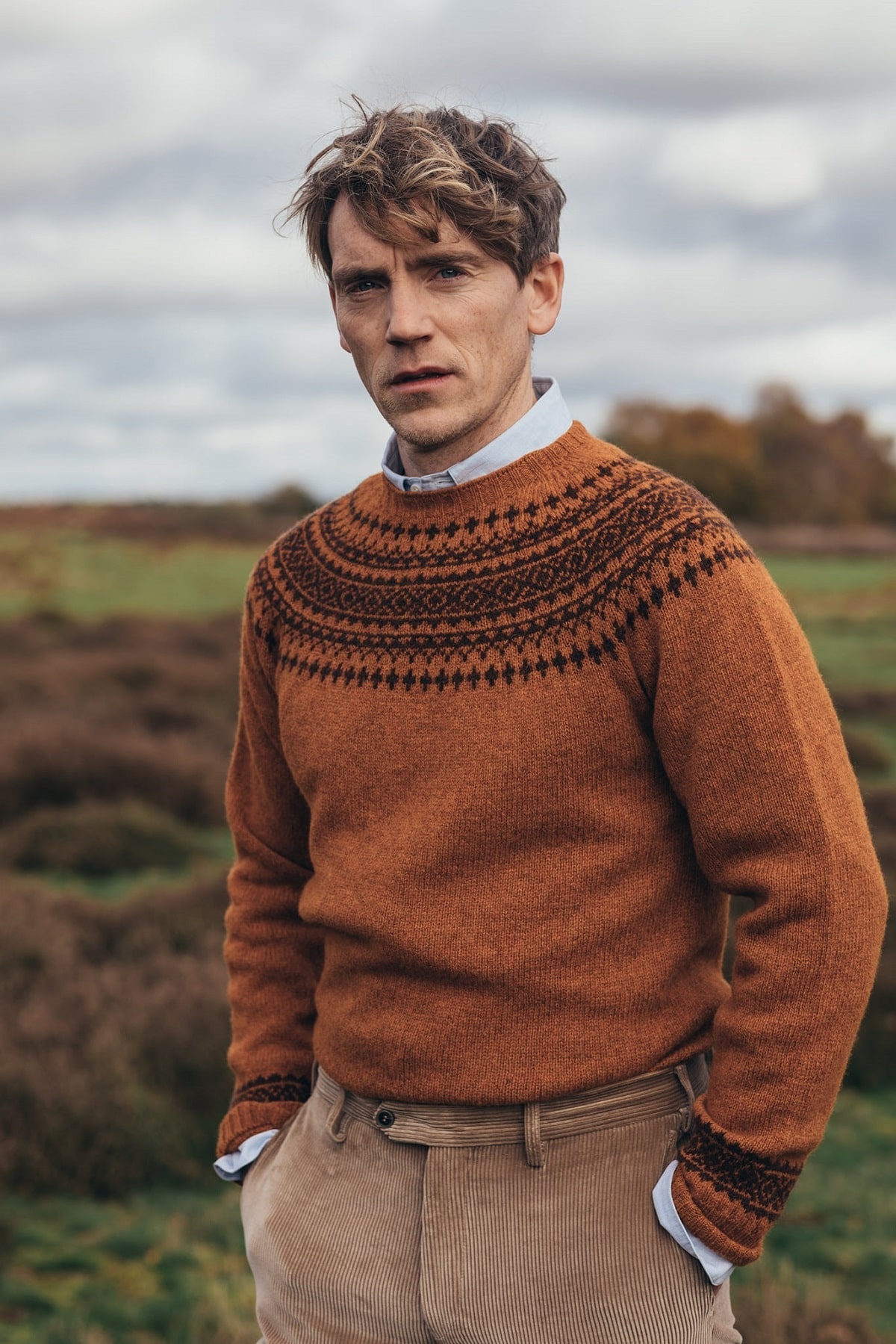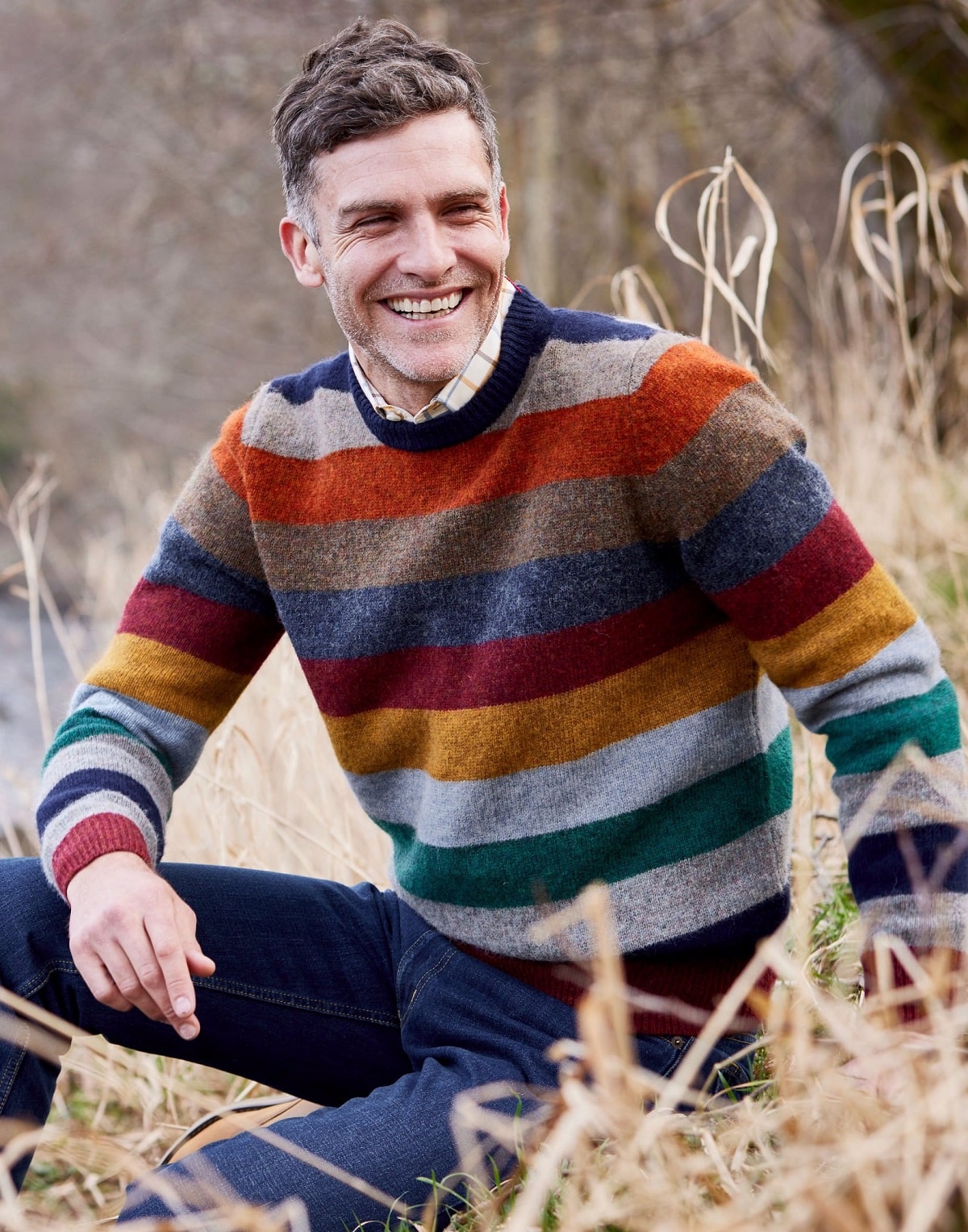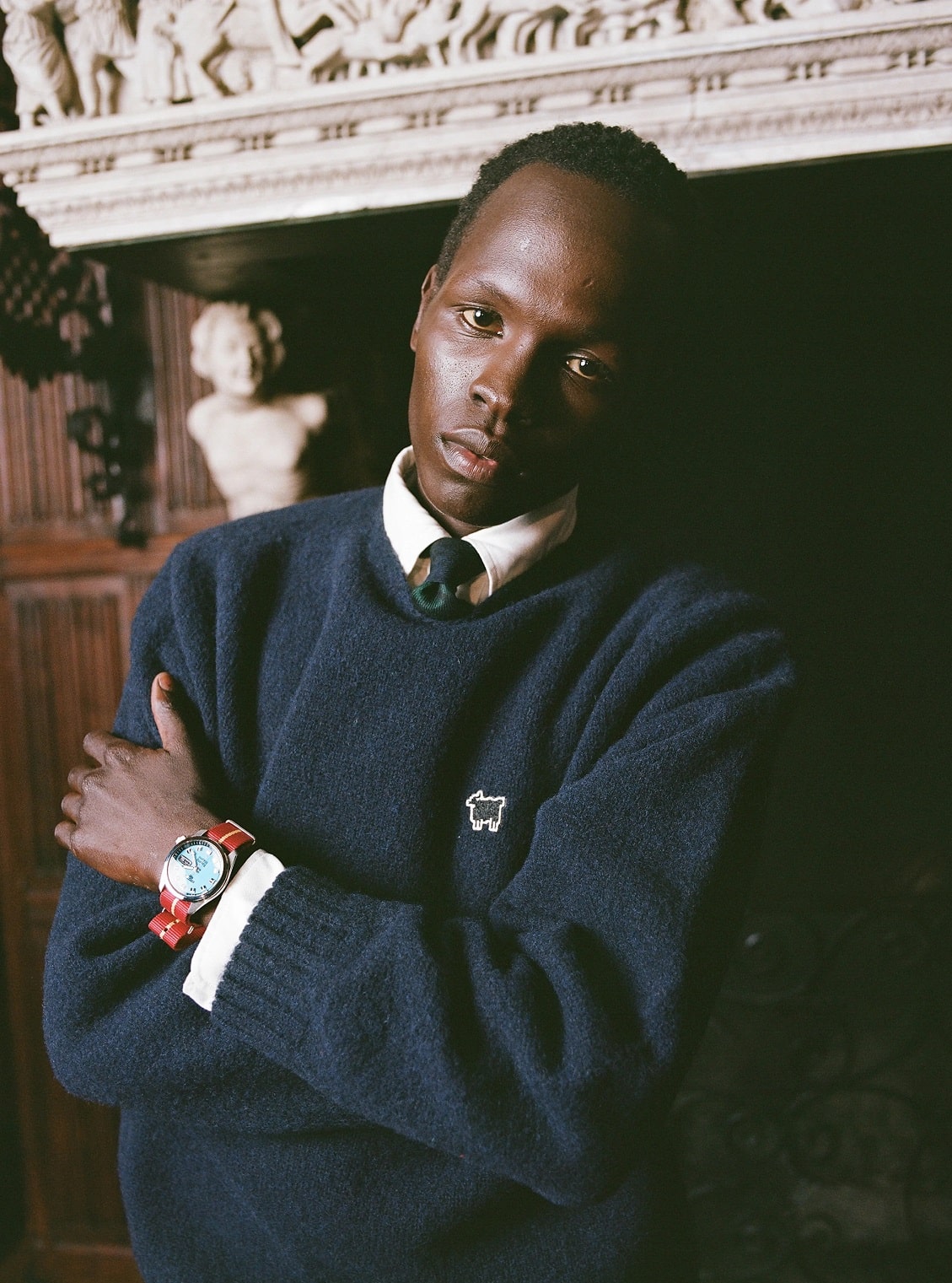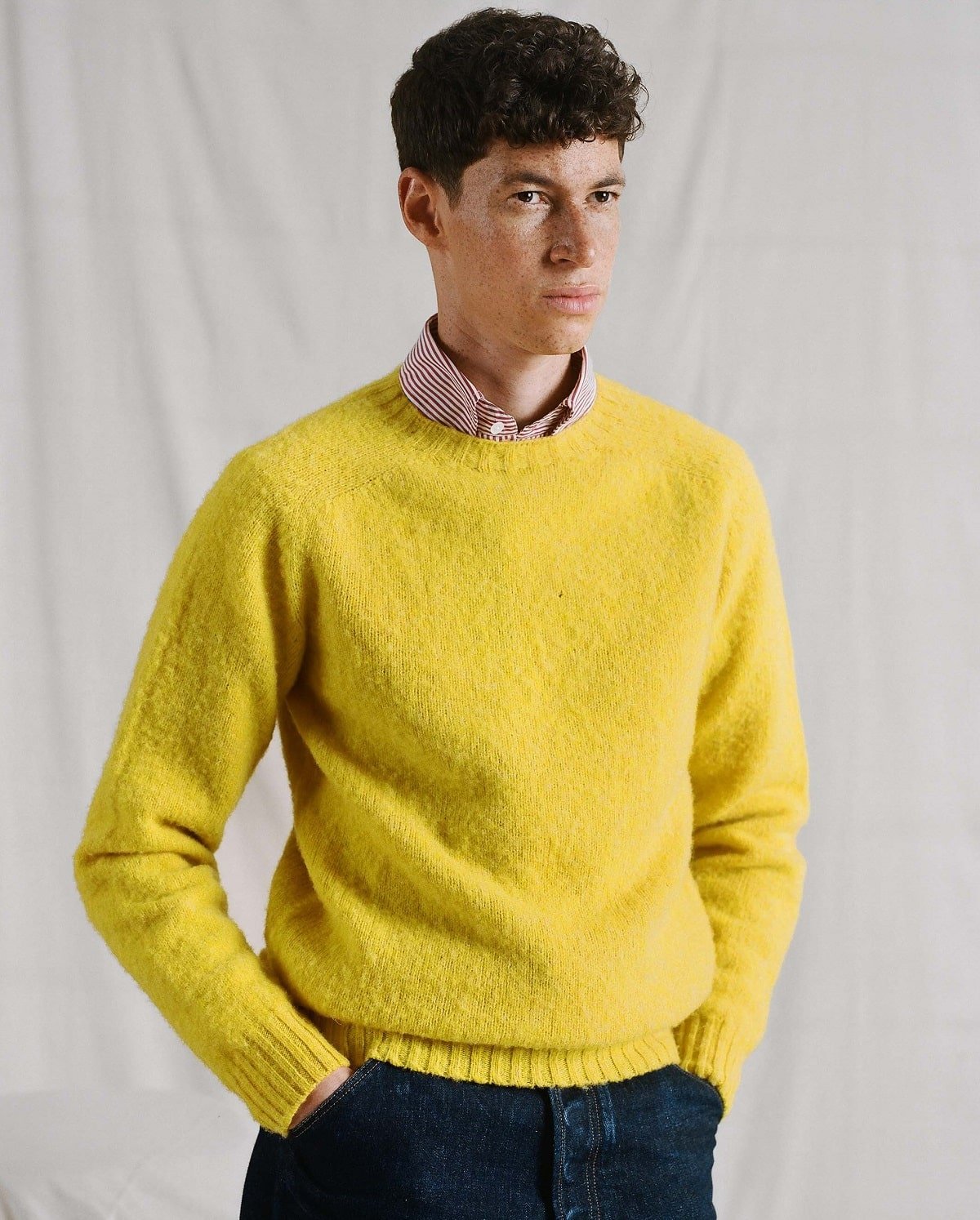1
HOME > Fashion History >
WHAT IS SHETLAND KNITTING?
Written by Ivan Yaskey in Fashion History on the 2nd November 2022

Think sweater, think wool, but which kind? These days, merino is touted as superior, both for its finer texture and also properties that make it suitable for activewear. On the other hand, at least in the menswear world, Shetland knitting and subsequently the region’s wool is also going through a resurgence. Although the material tends to have a rougher quality about it – ideal for keeping warm in the Shetlands’ harsher conditions – there’s a heritage aspect that merino lacks.
What is Shetland Wool?
Popular terminology – especially outside of the United Kingdom – frequently equates Shetland wool with Fair Isle knitting, distinguished by multicoloured rows of geometric shapes. This association, however, isn’t always absolute: You can produce the same pattern with acrylic threads, while Shetland knitting often takes on a solid colour or striped elements. Located at Scotland’s farthest point, the Shetland Islands are home to about 400,000 sheep – many of which are used for wool and are said to outnumber residents by 20 to one. The region’s conditions mean the sheep grow a lighter, softer, somewhat crimped wool compared to what you’ll find in other parts of the world. Knitting sweaters from these fibers results in a midweight, textured garment better designed to keep residents warm in colder, wet conditions. These sweaters can also be layered without adding extra weight, and that aspect remains part of their appeal.

Focusing strictly on construction and composition, Shetland wool doesn’t have a uniform consistency. Rather, adding a somewhat custom, organic quality to a garment, 11 distinct colours, plus 30 other variations, get produced without the need for dye. This aspect further contributes to a softer feel that highlights the wool’s natural texture. Along with this, long-staple wool fibers measure about 23 microns on average but, based on location on the sheep, vary from 10 to 35 microns. A scaly texture characterizes each fiber: The more prominent the crimping present, the fluffier the garment tends to feel. To obtain the wool, Shetland sheep begin to grow new fleece at the start of spring. This causes the older growth to loosen and shed, allowing it to easily be removed or “rooed” by hand, rather than sheared. This approach tends to result in softer fibers and texture. From here, the fleece can be spun to become threads for a sweater, a worsted wool fabric, tweed, or felt. For a sweater, these qualities often produce a single-piece, seamless garment – created through a method called knit in-the-round, which can be done by hand or machine – or one with saddle shoulders. The wool is then brushed to get rid of the tougher, itchy texture – a process that, instead, gives it a slightly fuzzy finish. On the other hand, while certain knits pill with time, Shetland wool tends to retain its structure, offering a longer, often decades-lasting lifespan. Despite brands adding the “Shetland” moniker to something with a Fair Isle knit, an authentic sweater is strictly made from Shetland sheep wool – although they don’t always have to be present on the islands. Regarding the Fair Isle knit, original Shetland sweaters often displayed a regional pattern. Today, they’re grouped into four types: plain, cabled, brushed, and Fair Isle.

The Origins of Shetland Knitting
Shetland knitting itself has no single origin. Rather, knitting as a practice appeared to emerge in Egypt in the 11th century, potentially influenced by a Syrian technique called nalbinding, and spread throughout Europe during Middle Ages. Eventually, residents of the Shetland Islands sold what they created to Dutch fishermen and Scandinavian and German traders. Within the islands themselves, knits could be exchanged for other goods or services. With Spain taking up a larger portion of the wool industry from the 16th century onward and subsequently affecting the U.K.’s economy and number of native sheep, Shetland knitting existed under the radar – excluding bartering and preserving technique – until the early 20th century. Around this time, members of the Royal Family were spotted in Fair Isle knits, and eventually, support from the Department of Agriculture helped keep the Shetlands’ economy afloat. World War II also meant that those stationed in the region often purchased Shetland knits and took these garments back home with them. By the 1970s, the oil industry greatly increased the region’s income and also created demand for authentic Shetland knitwear. From here, knitters would add marks for authentication purposes, while garments and production methods started to diversify – through patterns, demand from the fashion industry, and where sweaters were being created. Wider production, at least for the time, shifted to England’s southeast region, while stripes based on Fair Isle patterns began to see increased demand from consumers. Over the past 20 years, the Shetlands have attempted to preserve this trade. Knitting festivals offer some insight into the craft, while the United Kingdom classifies native Shetland wool as a Protected Designation of Origin.

Within this narrative:
- Multiple knitting styles have emerged from the Shetlands: Along with the familiar colourful Fair Isle combination, this includes a lace-like knit created from softer fleece. Motifs typically reflect their island of origin.
- Patterns and styles were passed through generations, often with no directions or written records used.
- Knitting wasn’t just a pastime for those living on the islands – it was a key pillar of the Shetlands’ economy for much of the 18th and 19th centuries.
Shetland Knits in Fashion
Popular adoption is said to go back to the early 20th century. In the U.S., Brooks Brothers transformed Shetland knits into a tenet of upper-class preppy fashion that, decades later, gained popularity among university students, who would often sport them with a wider-cut jacket. In the 1920s, paintings and photos depicted the Prince of Wales sporting colourful Fair Isle knits, including as he golfed. By the 1960s, the era’s celebrities, including Paul McCartney, Mick Jagger, and Twiggy, were periodically seen wearing solid-colour or Fair Isle sweaters. Into the ‘80s, the period’s convergence of preppy style and colour diversified patterns knit into Shetland sweaters. Stripes and gradient combinations became more common. Today, AW22 menswear collections highlight Shetland sweaters – partially for their more textured appearance, partially for the ski chalet-evoking Fair Isle patterns, and partially for their heritage appeal. From a preppy stance, the light-yet-warming knit is ideally worn over a button-front and below a sports jacket, preferably with flat-front chinos. In a more casual direction, they make an efficient layer over a T-shirt that trims down a bulky look and feel.

Trending
2
3
4
5
6
7
8
9
10










